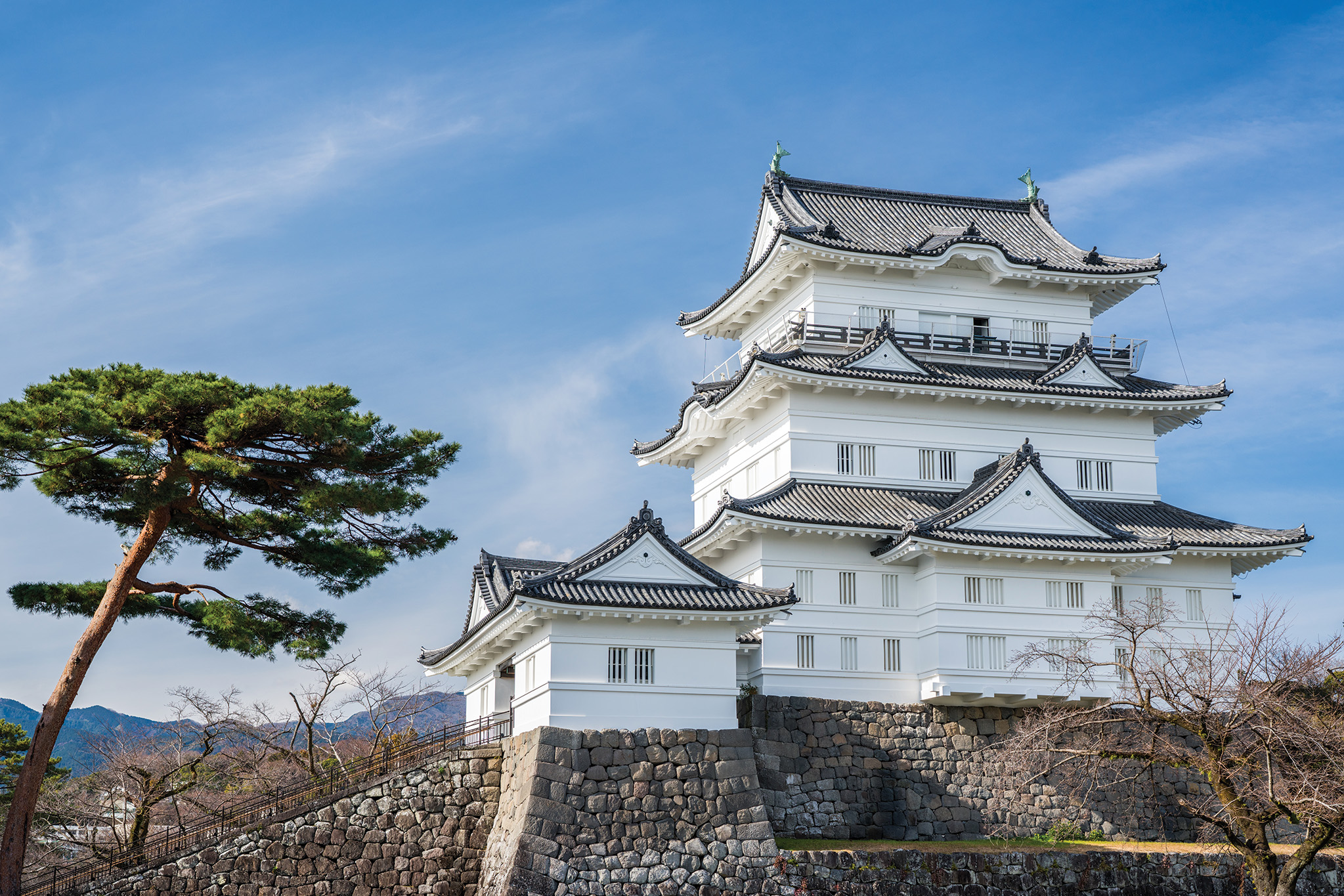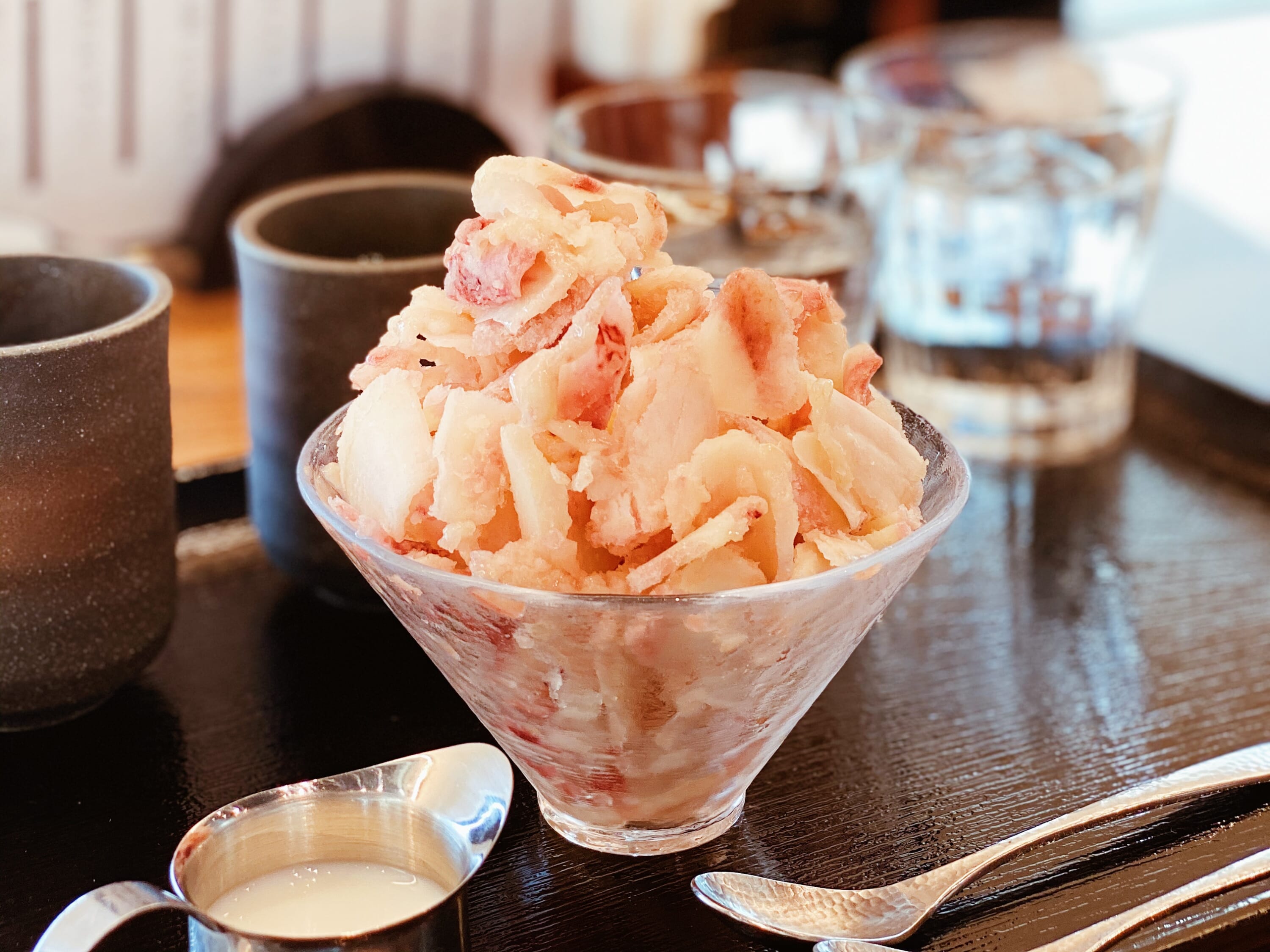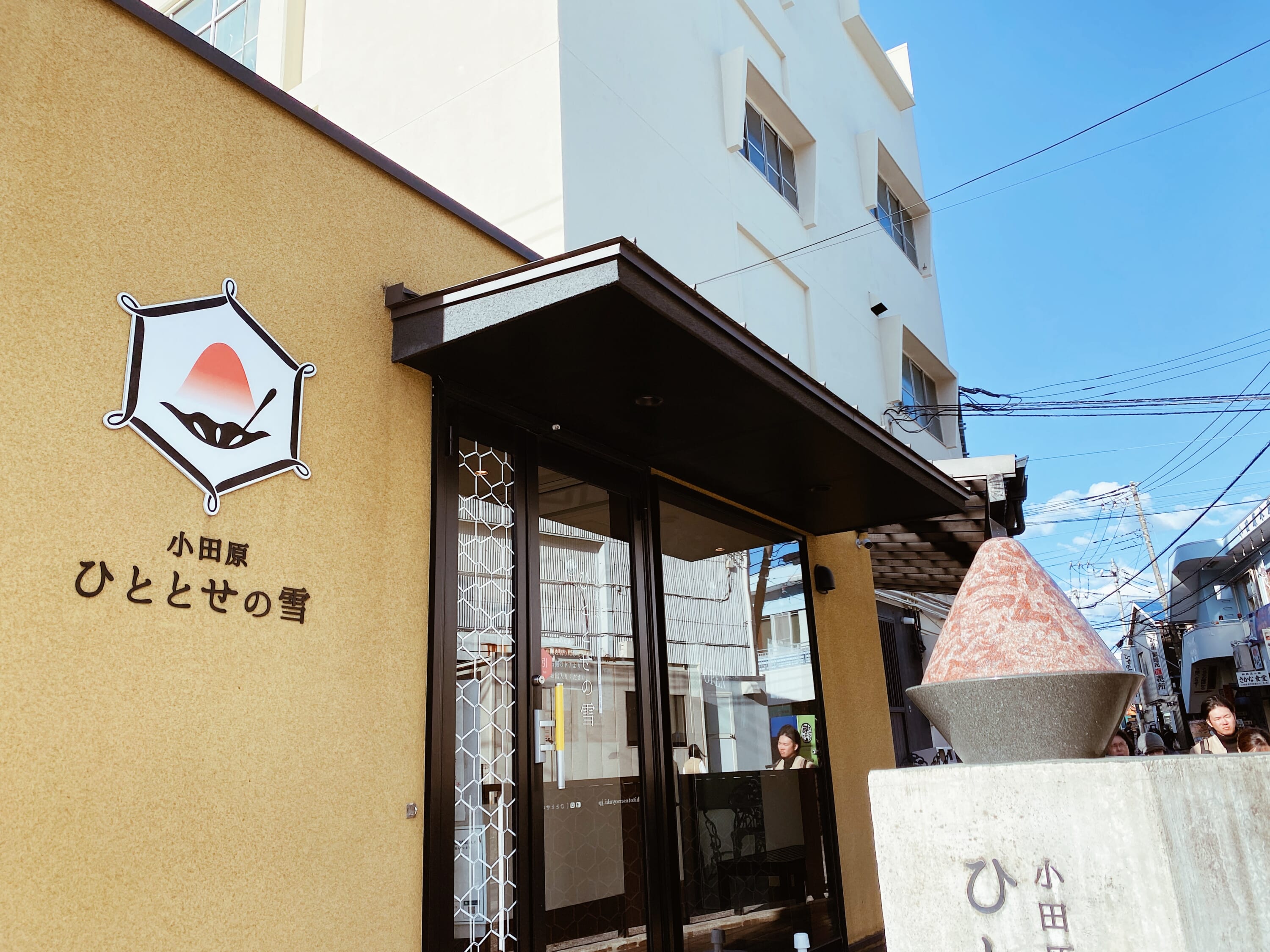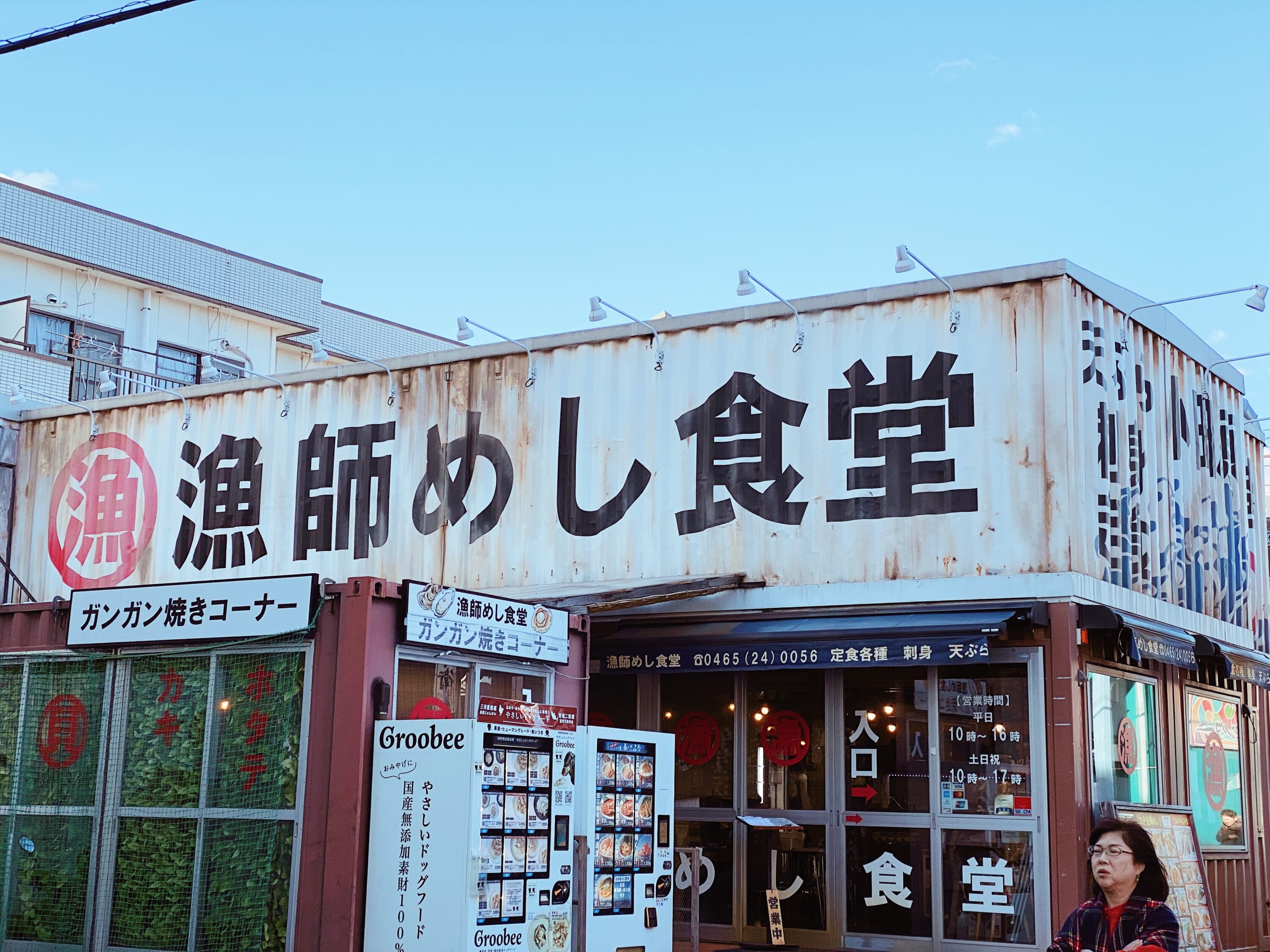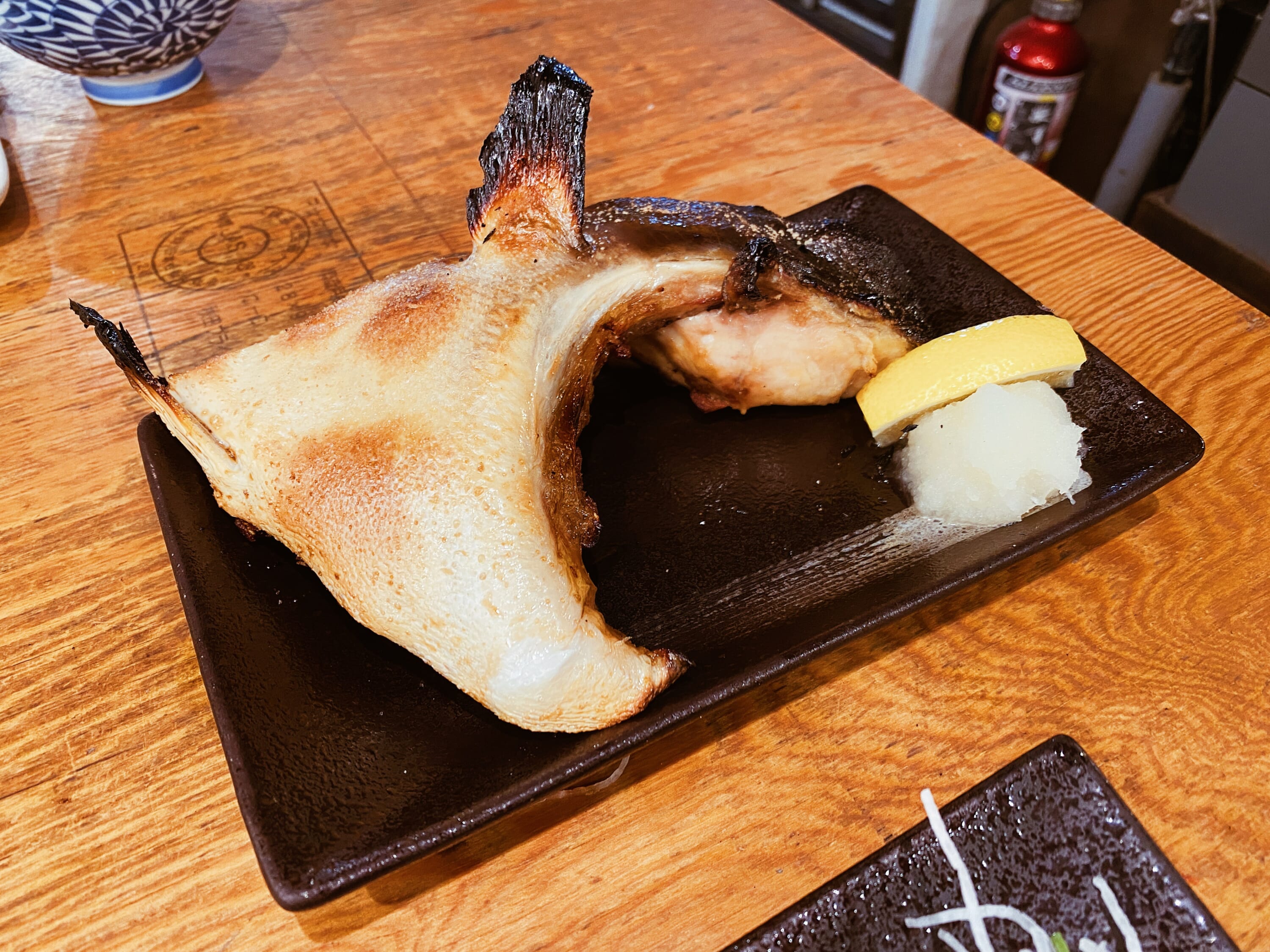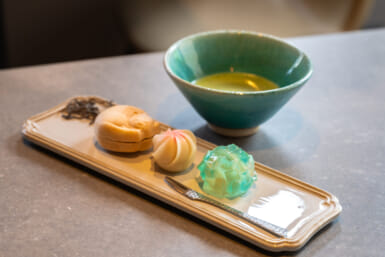1. Hitotose no Yuki
You’ve never had kakigori like this. Hitotose no Yuki takes 100% pure fruit to the limit by offering shaved ice made entirely out of frozen fruit. No blocks of frozen ice, minimal added flavor, just fruit. Off the menu are year-round staples like strawberry, mikan, pear and melon. Depending on the fruit you choose, the result of shaving them can be quite beautiful and akin to flower petals. For the slightly more adventurous, there’s a tomato wild card flavor too, which promises hints of sweet and savory notes. And if you’re all in for an indulgent treat, the Hitotose Parfait has all the elements of the aforementioned kakigori plus a swirl of the famous Cremia soft cream. It’s a wonder that this style of shaved-ice without ice hasn’t spread further to other parts of Japan.
2. Fisherman Rice Cafeteria (漁師めし食堂)
Both the name and the relaxed style of this eatery give off a no-frills vibe to go with its high-quality seafood dishes. Built around the concept of wanting to eat what the fishermen eat, patrons can expect a menu of classic staples plus a smaller list based on the freshest catch of the day. If you’re up for a mix of different dishes, there are teishoku deals that offer both sashimi and fish fry, giving you the best of both worlds. When dining in groups, it’s recommended to supplement your meal sets with a savory plate to share such as grilled yellowtail or aji tataki. From there, it’s far too easy to just roll yourselves out the door with a satisfied belly.
3. Suzuhiro Kamaboko Village
If you’ve always wondered how the Japanese made their bouncy, delicious fish cakes known as kamaboko, the Suzuhiro Kamaboko Village has all of your answers. With more than 150 years of history in the seafood retail business, the existing Suzuhiro estate is now a multiplex that houses factory tours, kamaboko workshops and traditional Japanese dining. Visitors can easily make their own kamaboko, experience a kamaboko kaiseki meal and sip on Hakone-brewed craft beer, all in the same vicinity. From its gift shop you can purchase classic chikuwa and kamaboko for use in home dishes like nabe or to enhance a light meal of hot soba. Suzuhiro has also started selling kamaboko with modern flavors such as a fig and cheese and a salmon and avocado kamaboko which pair brilliantly with a glass of wine. And to ensure there really is something for everyone, you can even pick up a Tomika Kamaboko for the kids, fish cakes shaped like buses and police cars.
4. Daruma
For a taste of tradition, it doesn’t get more classic than Daruma, a Japanese restaurant established in 1893. The aesthetics are unbeatable with its formidable exterior that features all the hallmarks of Japanese architecture and a classic tatami-style flooring for its private rooms. While the menu is expansive, most go for the specialty tempura that range across a variety of local fish and prawns plus eggplant, mushrooms and pumpkin, depending on seasonality. Other great options that are on the lighter side are its seafood chirashi sushi and premium tuna sashimi donburi.
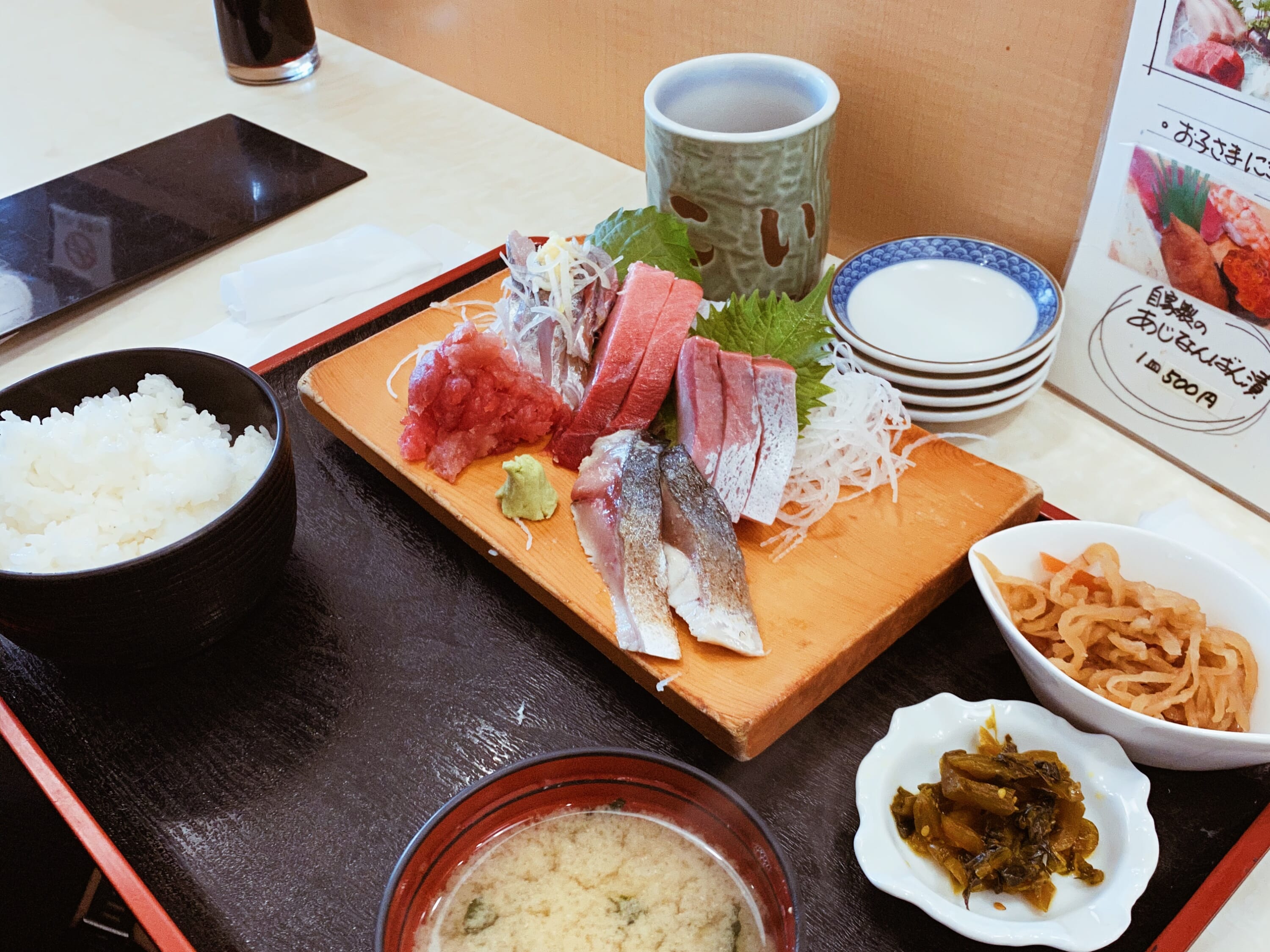
5. Odawara Fish Center
The pinnacle of seafood in this area lies in Odawara Fish Center. This is a capsule sized version of Japanese seafood market greats like Tsukiji, but does not lack when it comes to taste, price and freshness. You’ll find a mix of eateries and stalls peddling all kinds of fish, prawns, octopus and their various entrails for purchase home or to eat there and then. There’s also a barbecue area should you wish to grill your purchases over hot coals immediately. Don’t skip out on the kaisendon restaurant either, Oshokujidokoro Kaiga 1 makes a mean akami (red tuna) don and also some lip-smacking simmered kinmedai (goldeneye snapper).

